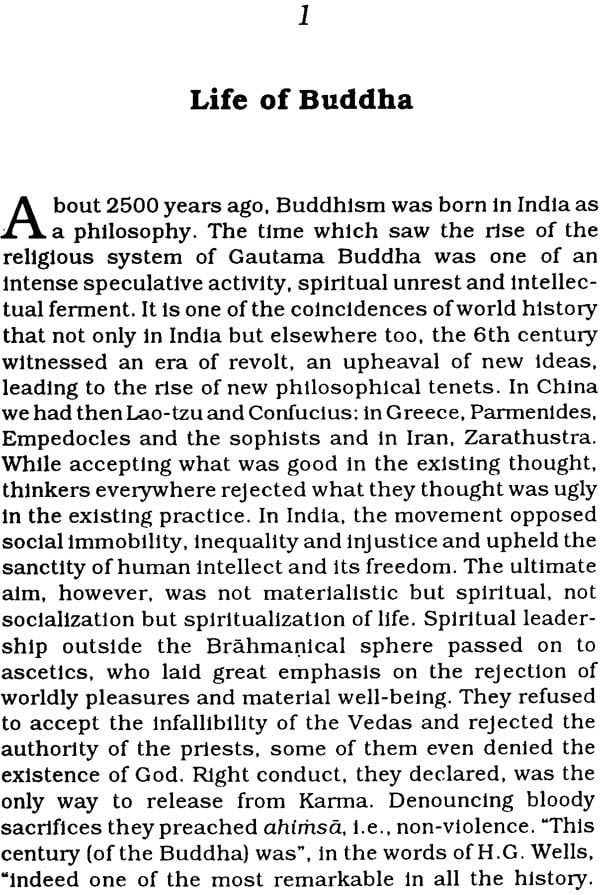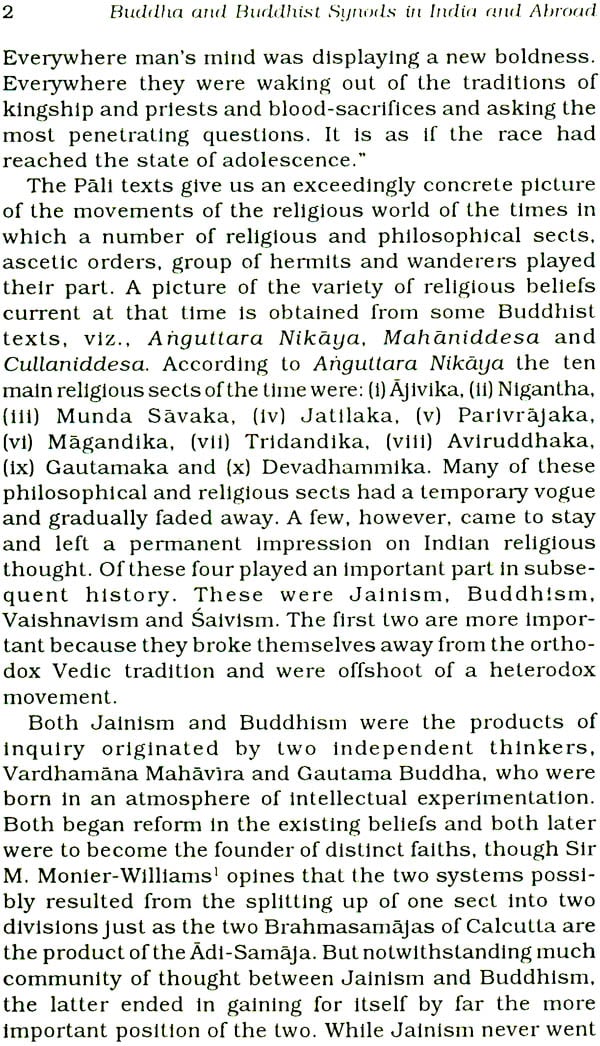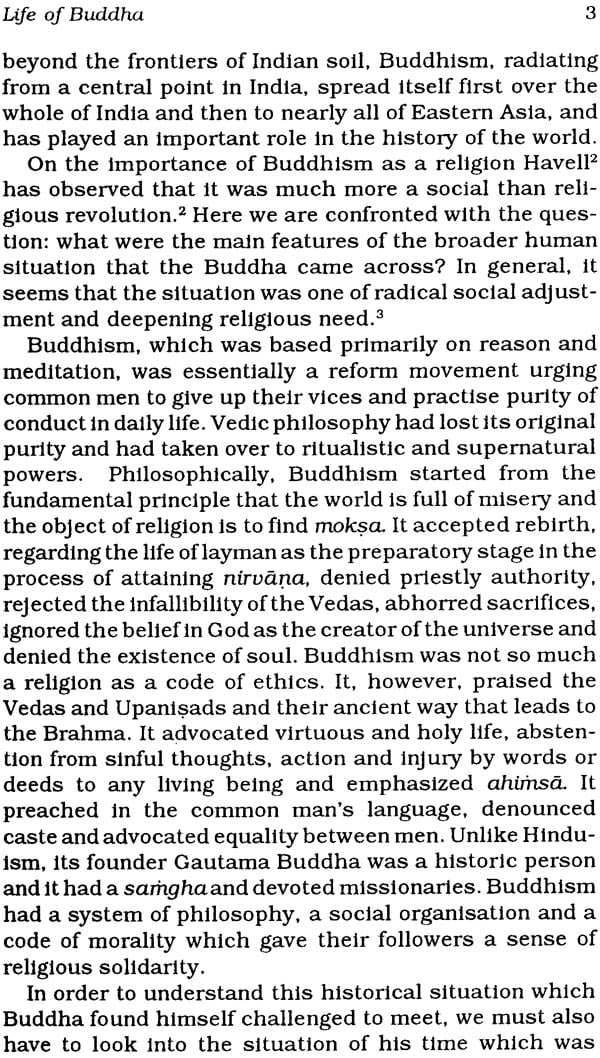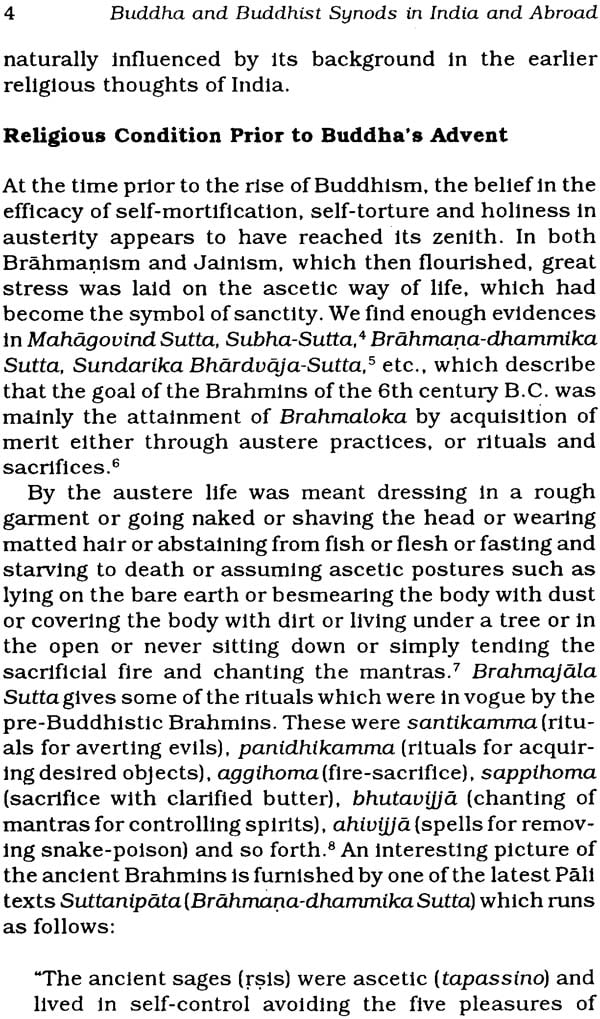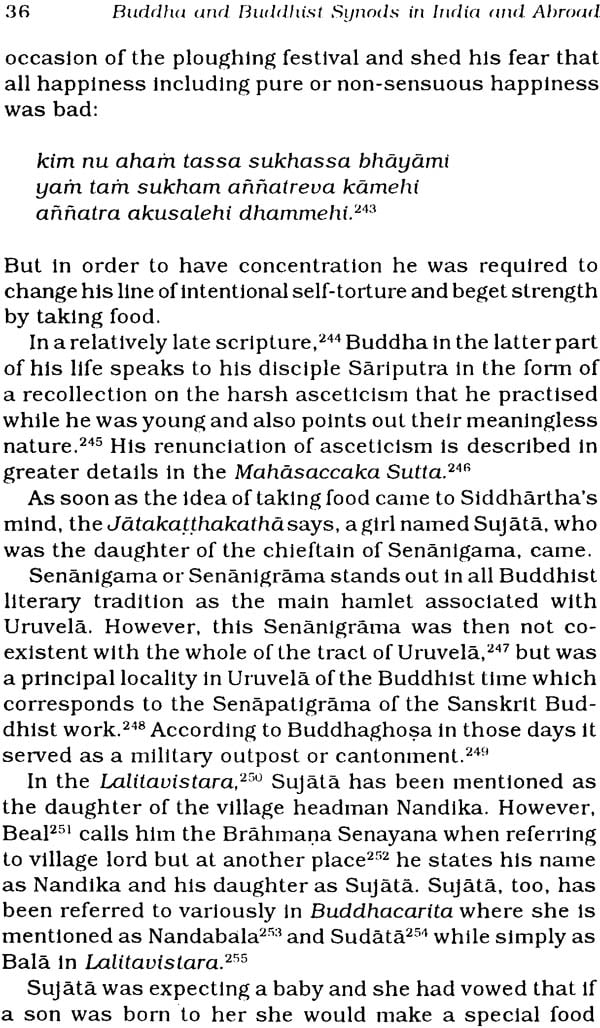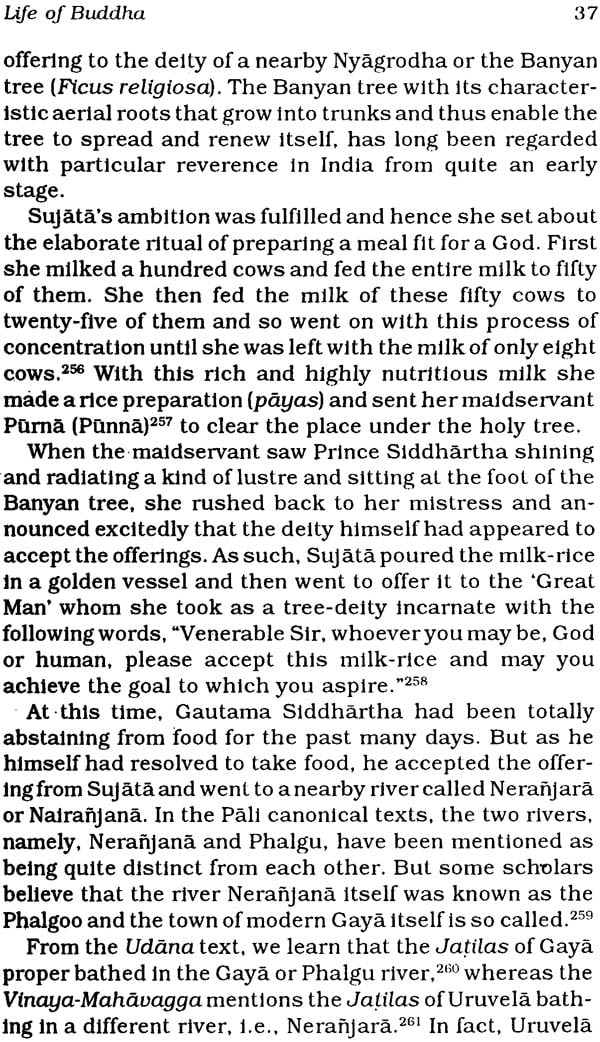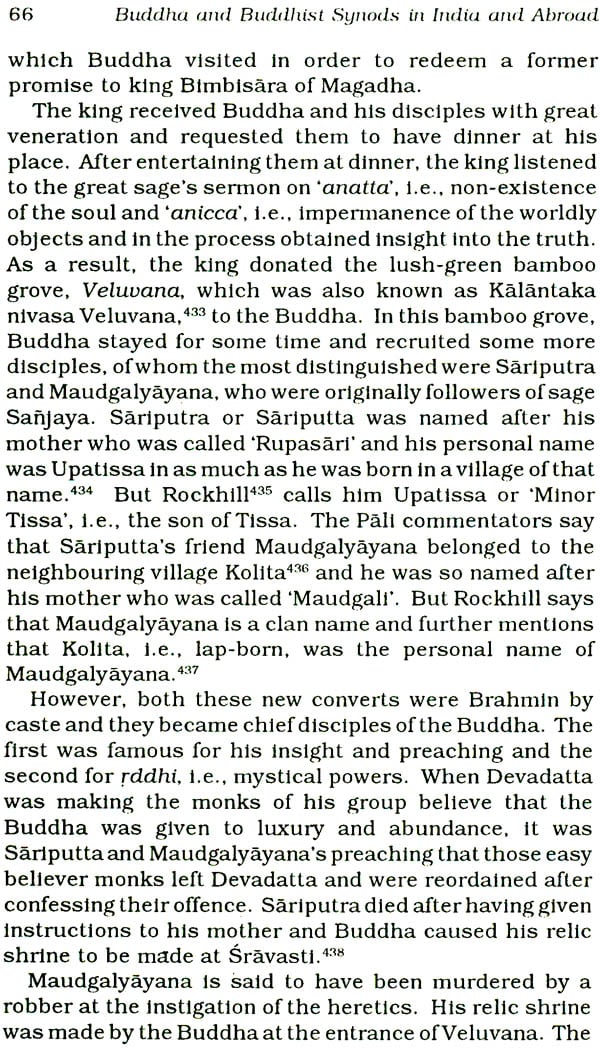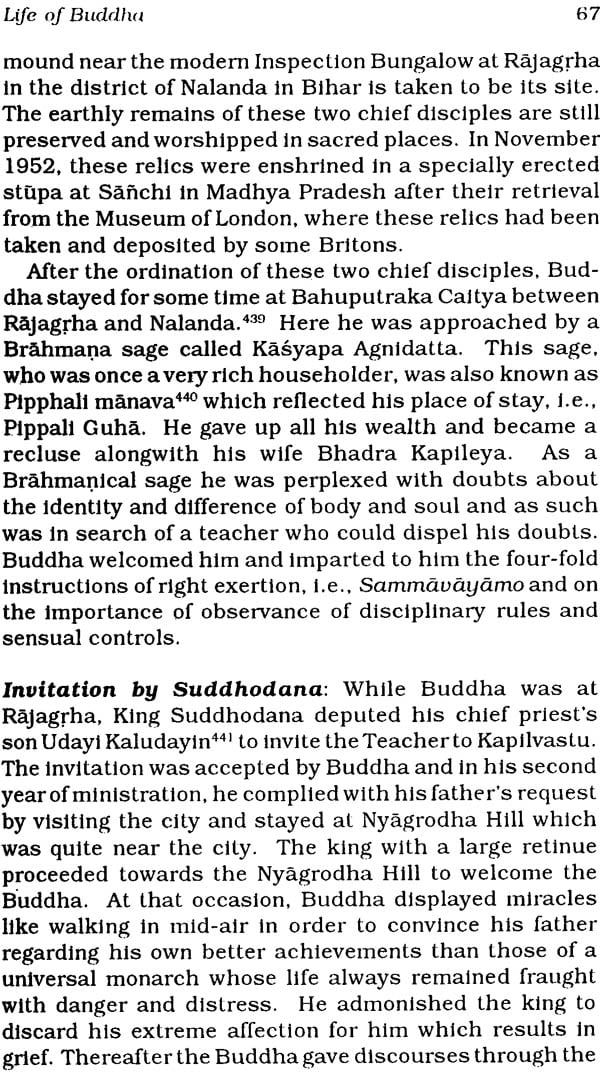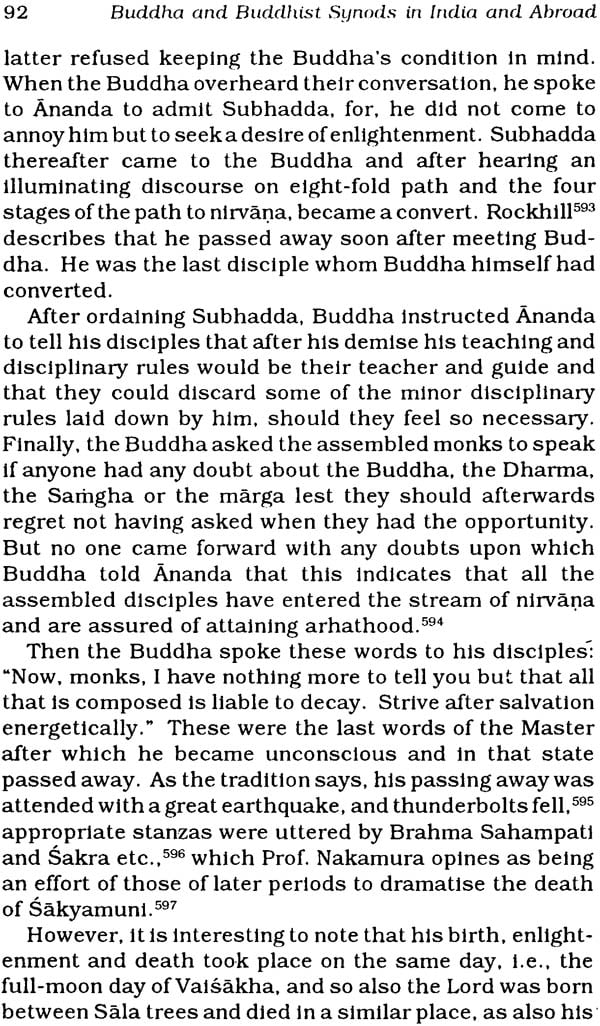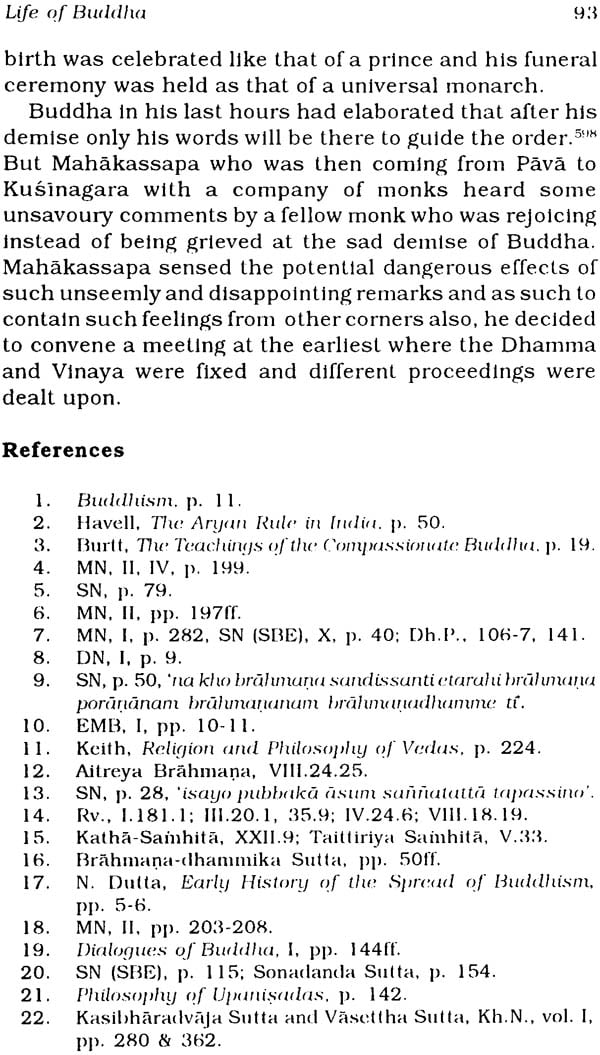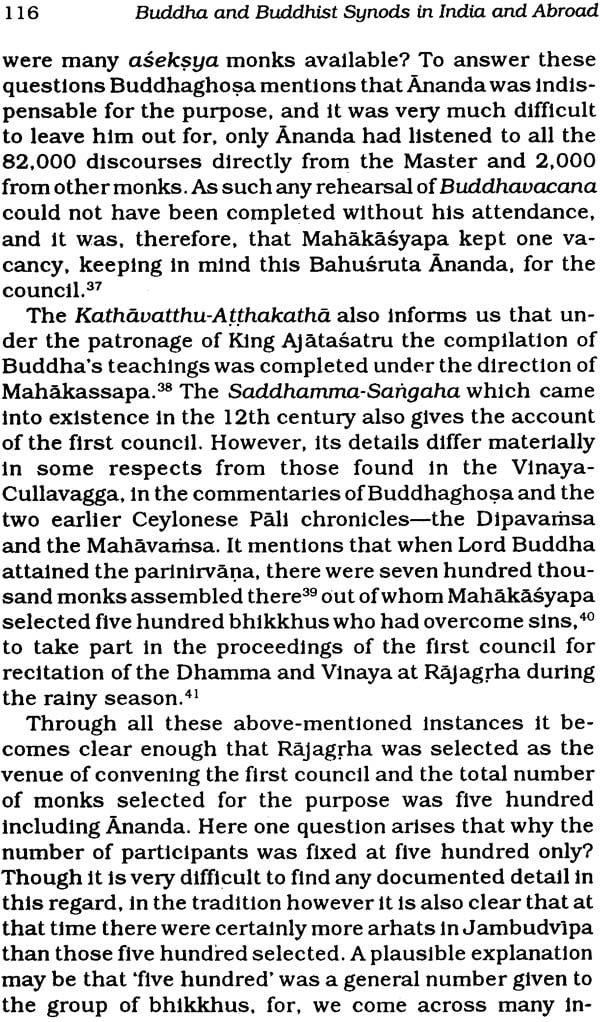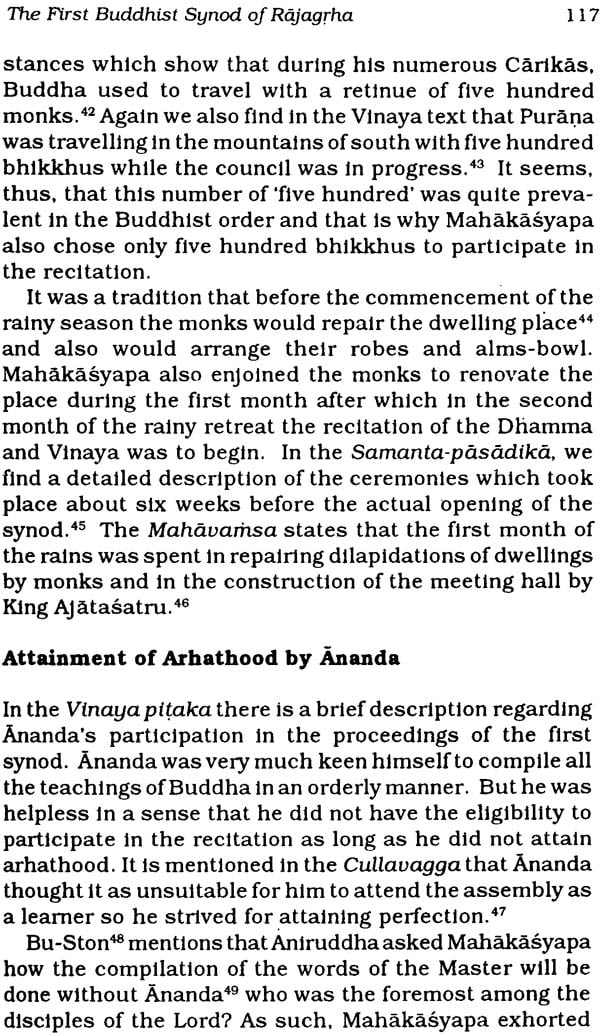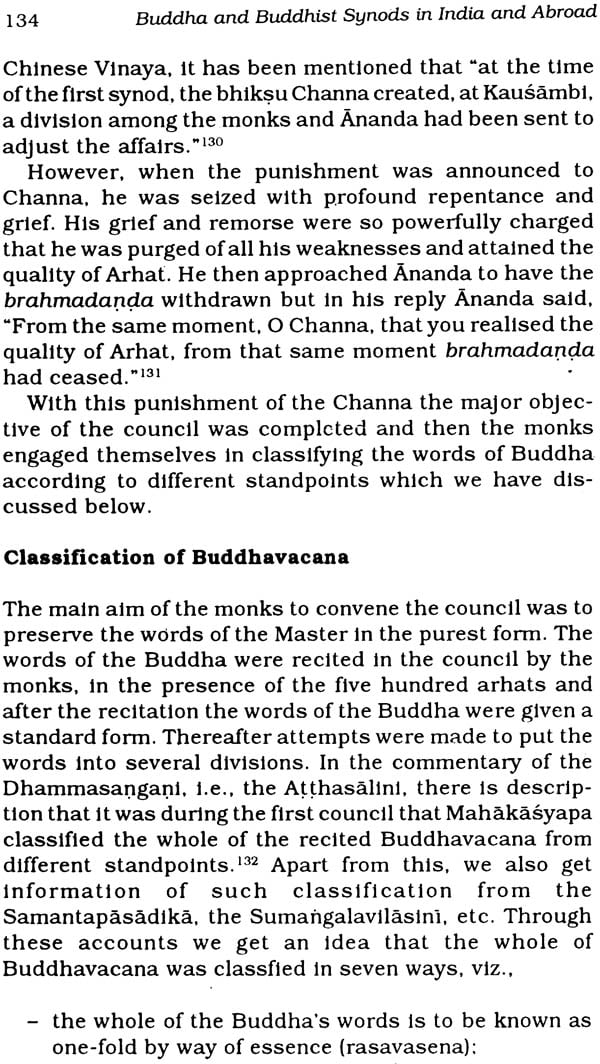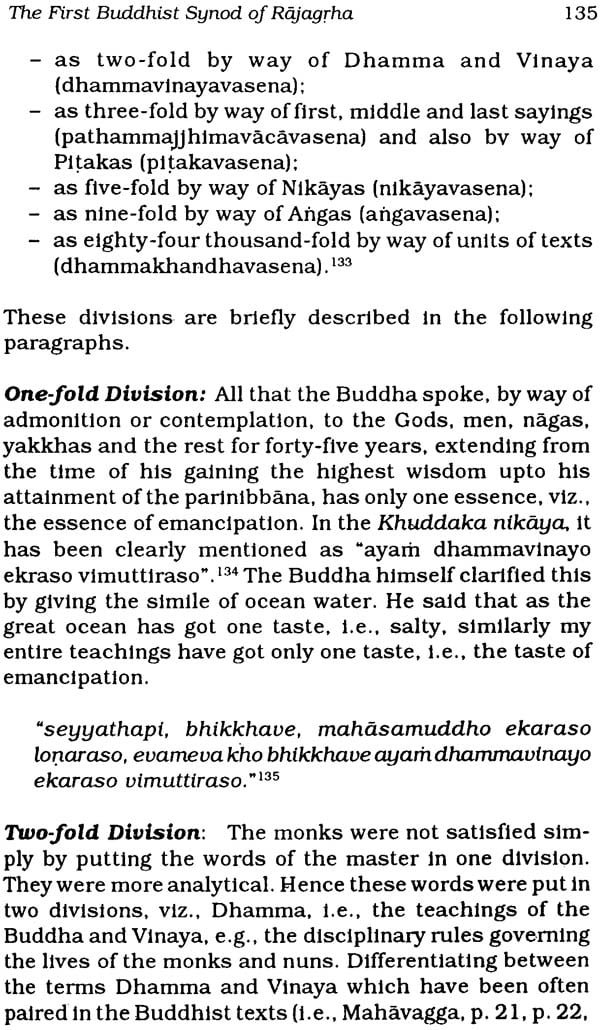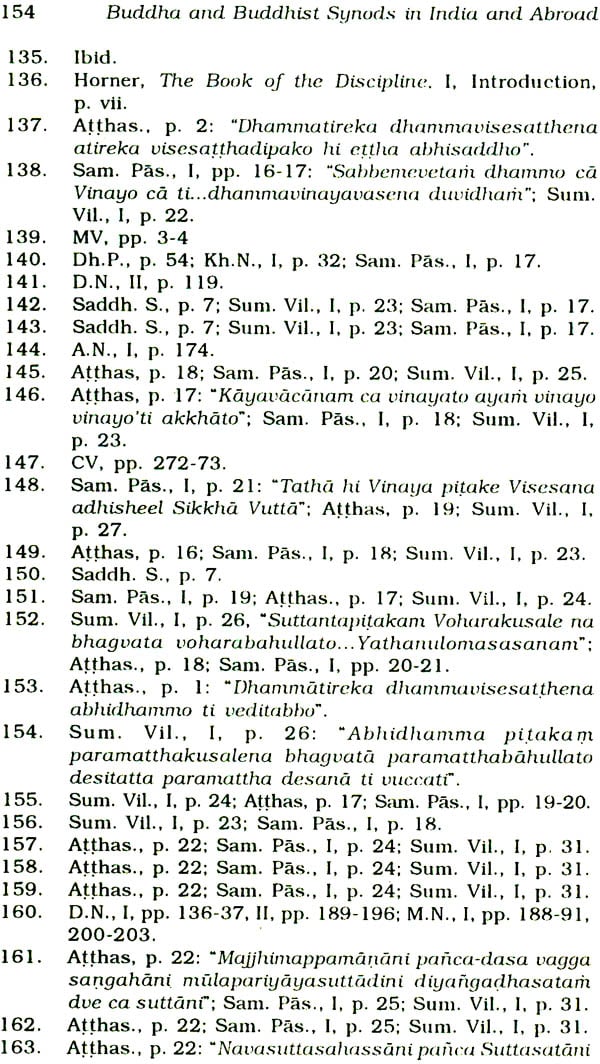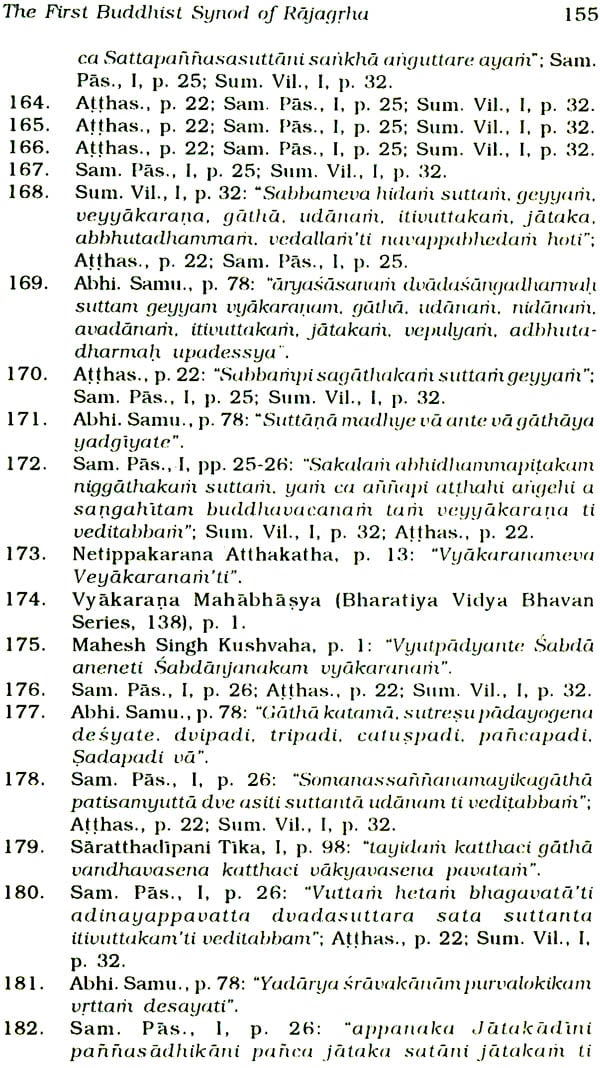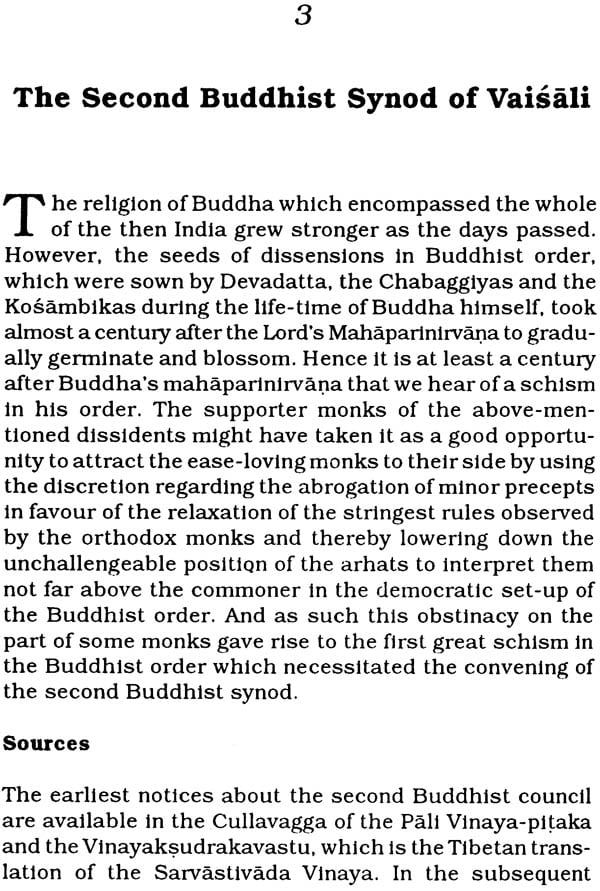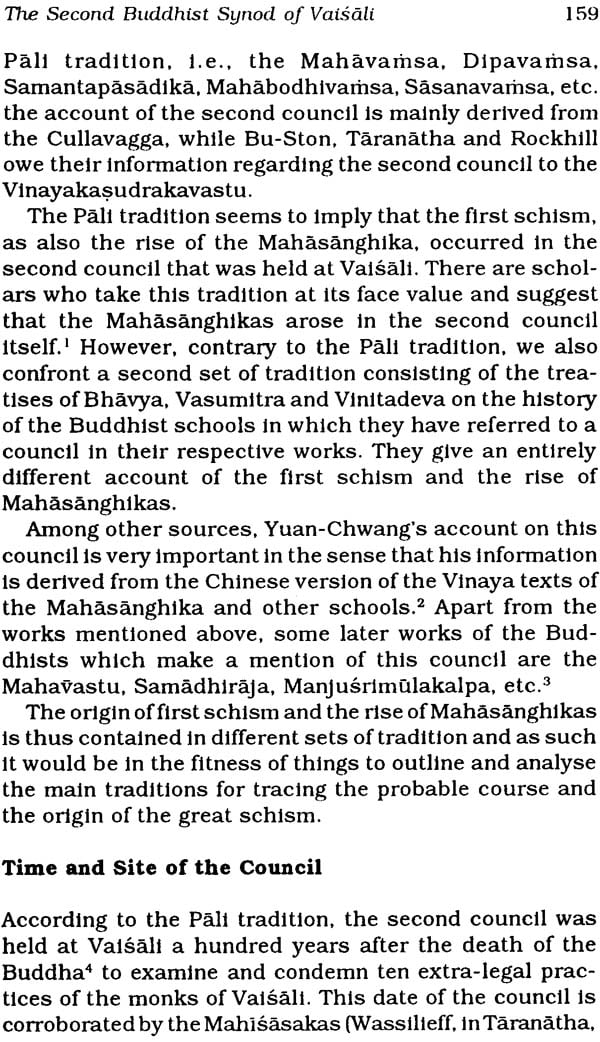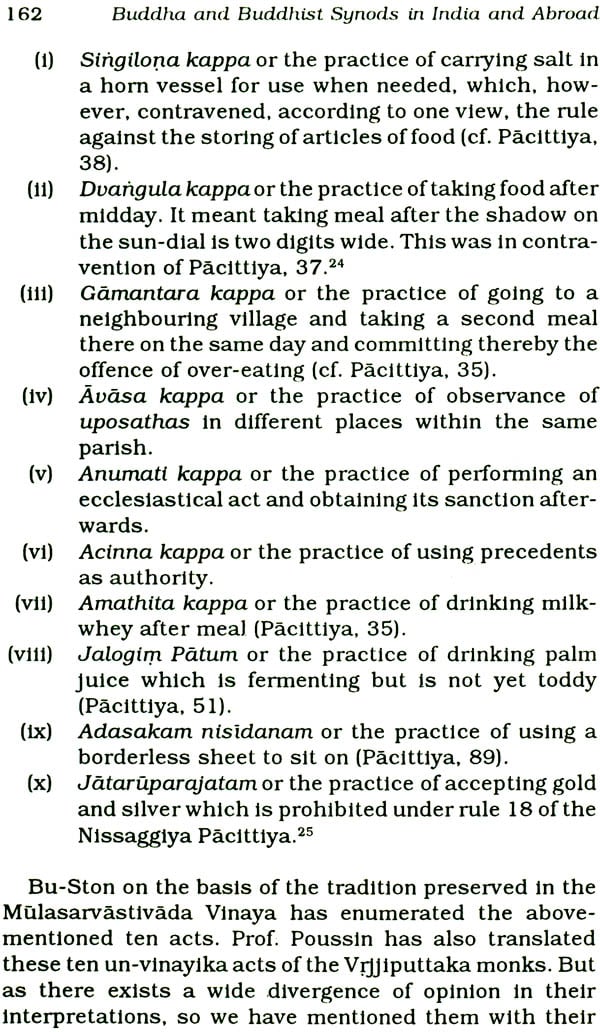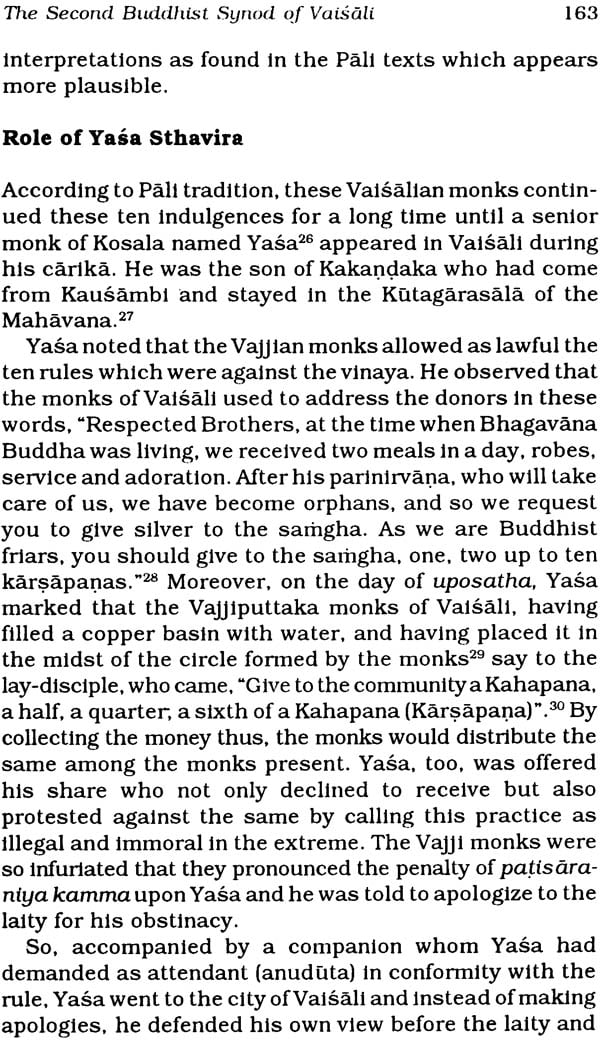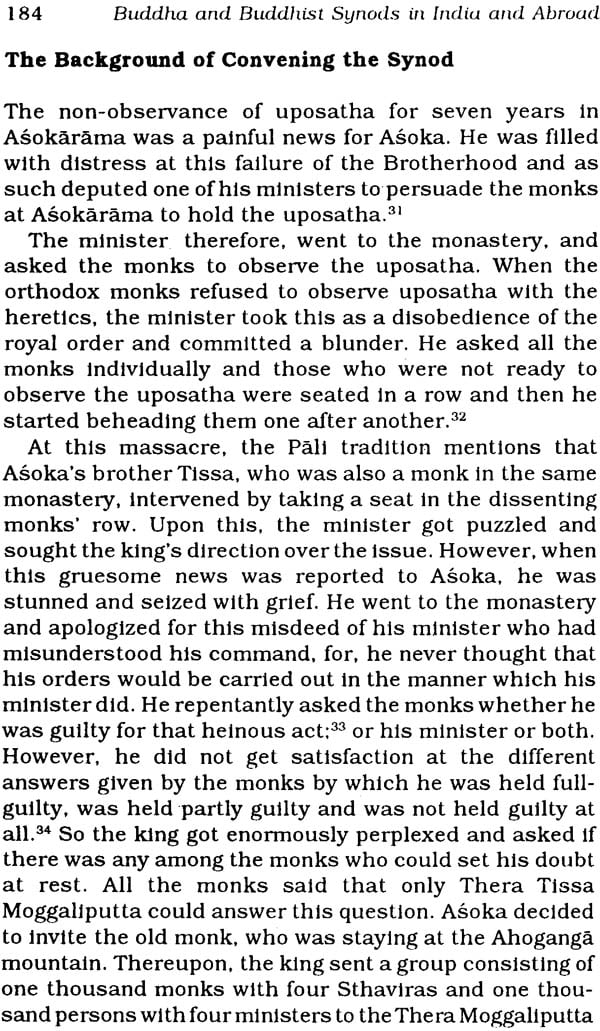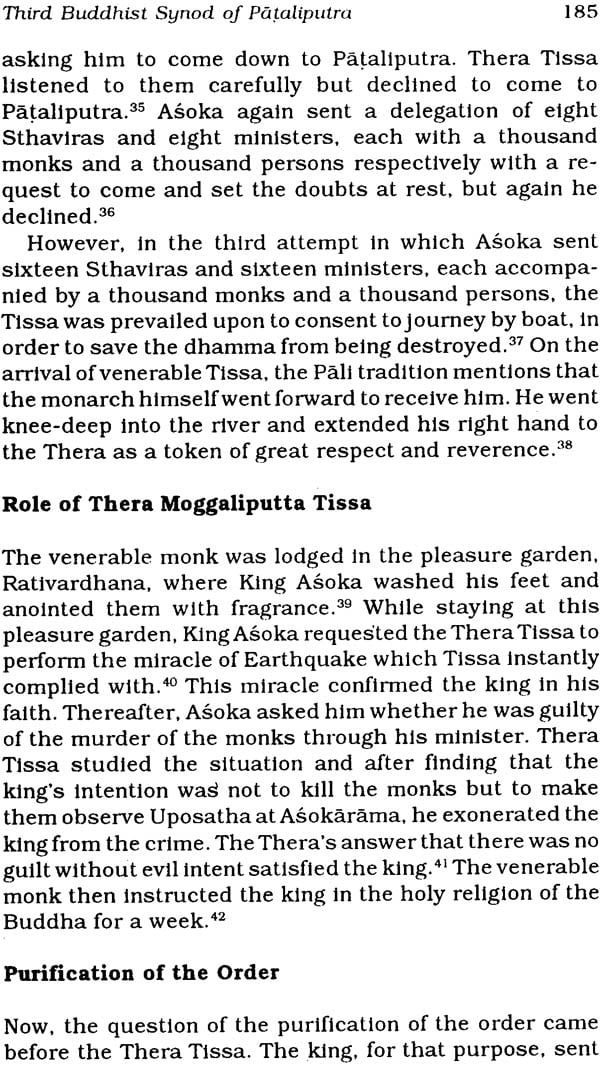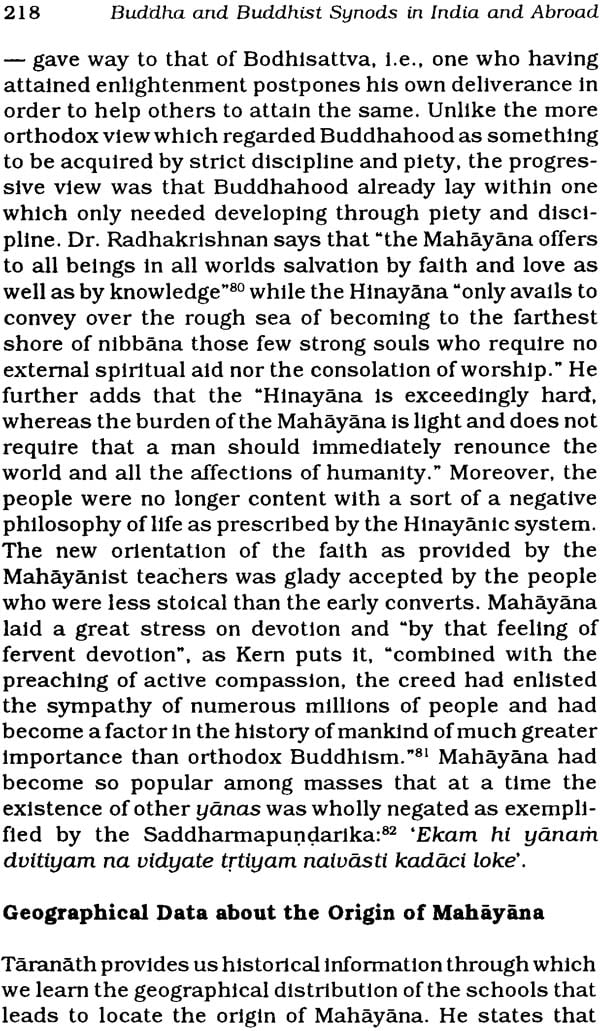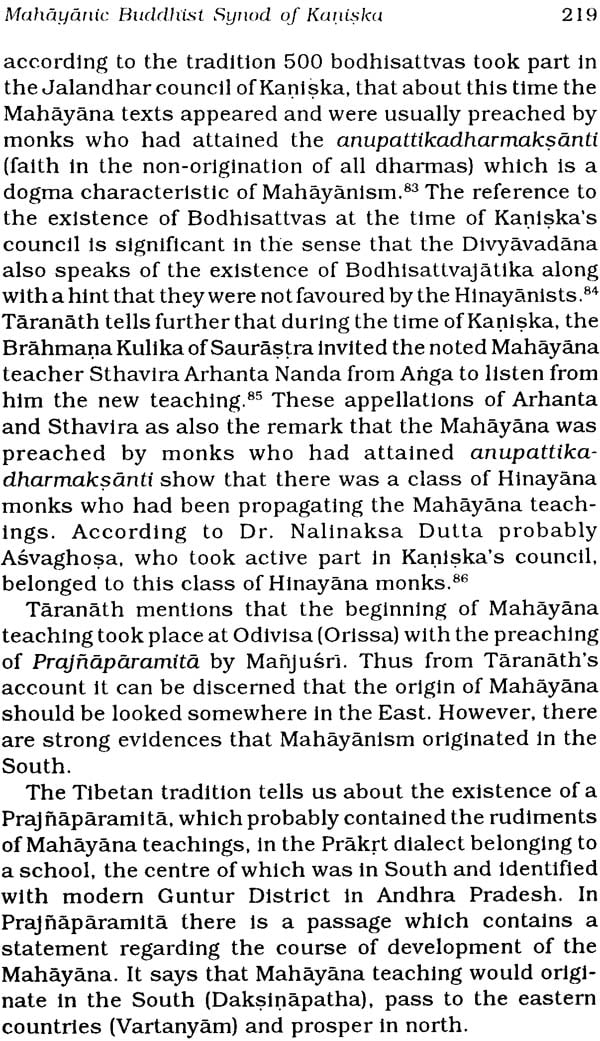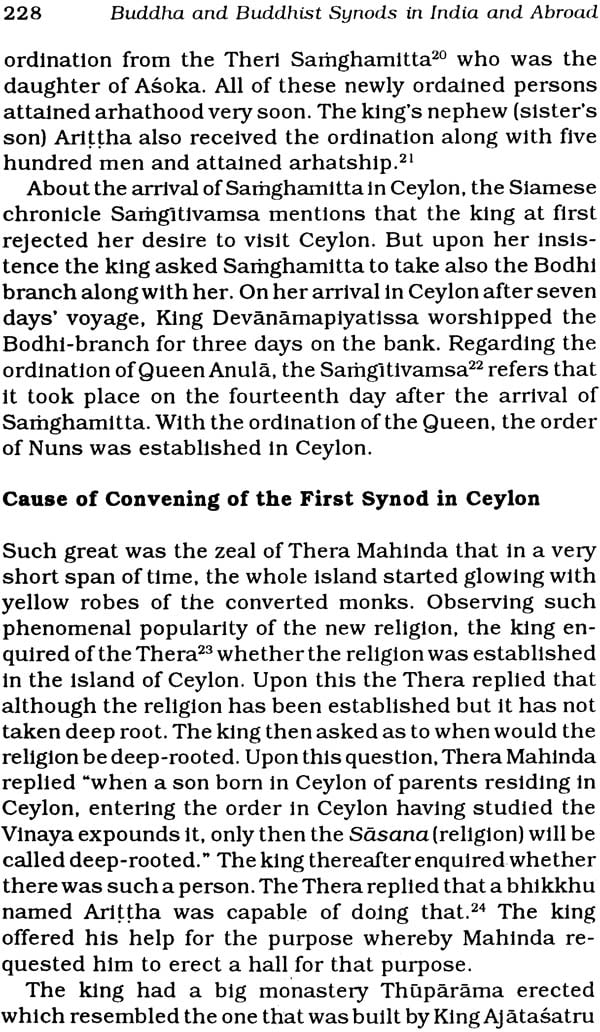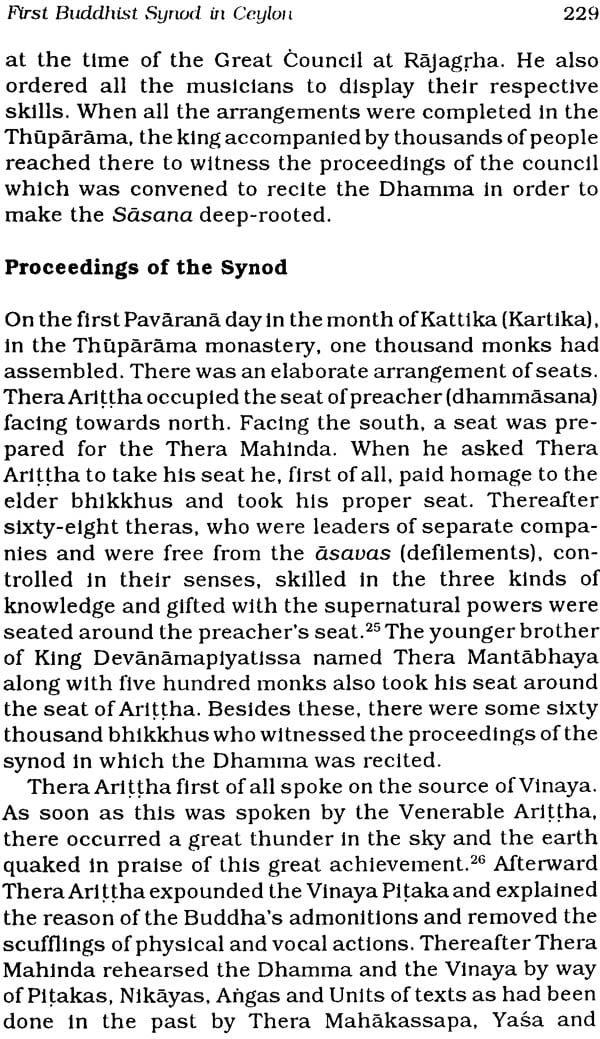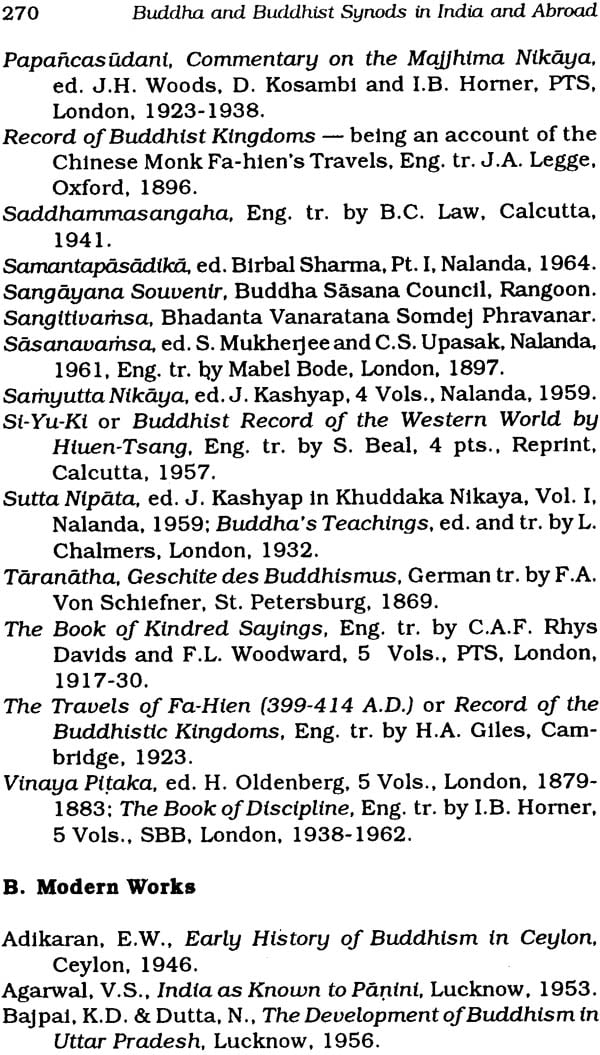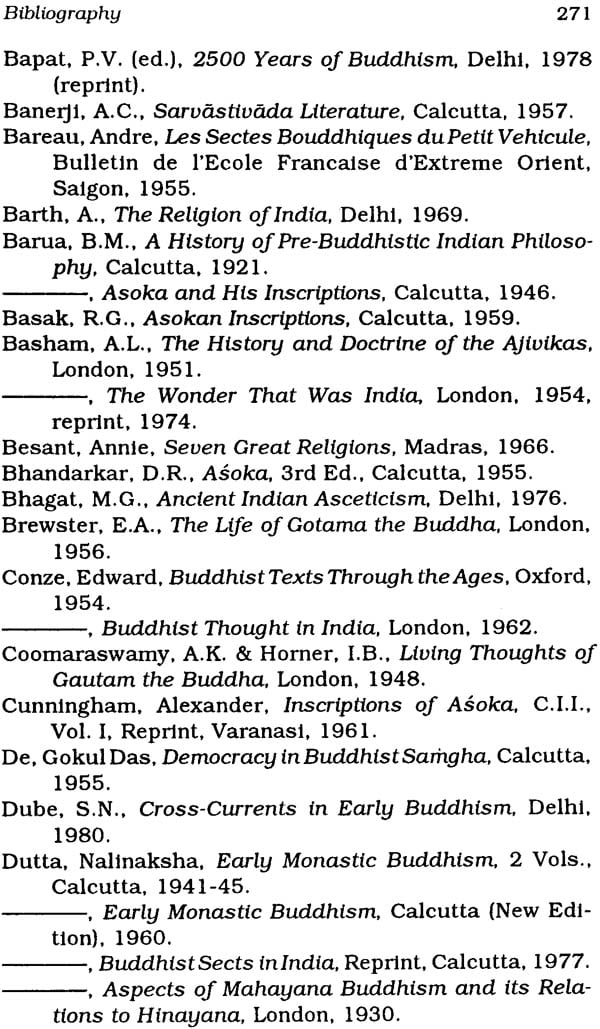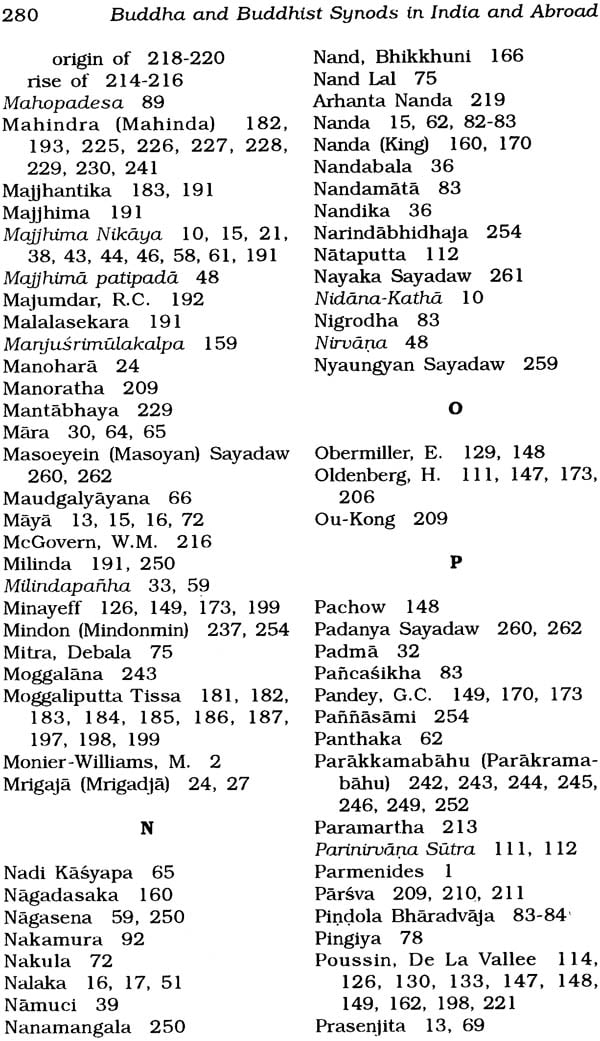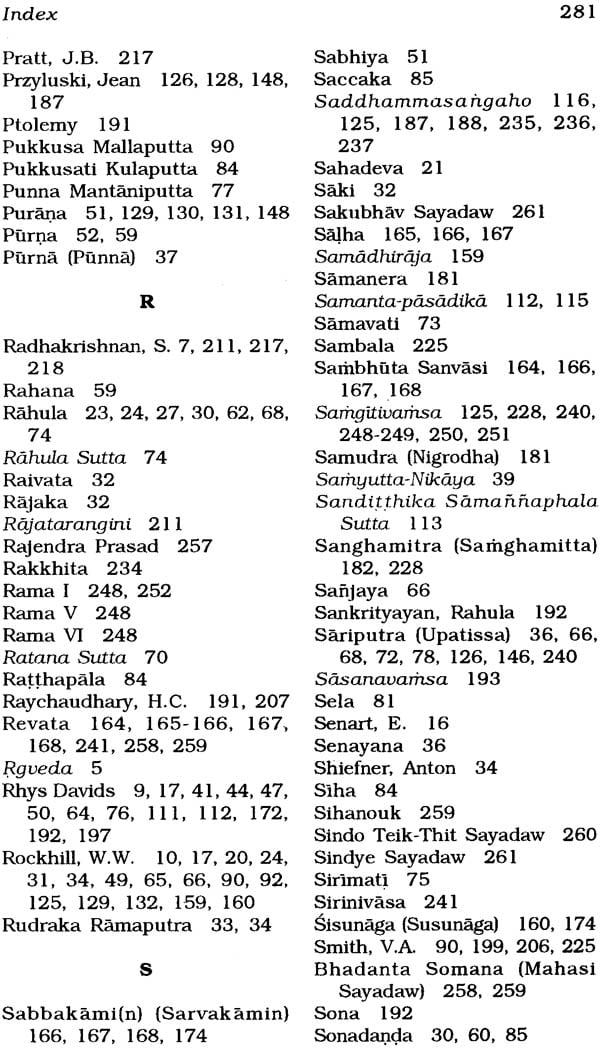
Buddha and Buddhist Synods in India and Abroad
Book Specification
| Item Code: | IDE034 |
| Author: | Amarnath Thakur |
| Publisher: | ABHINAV PUBLICATION |
| Language: | English |
| Edition: | 1996 |
| ISBN: | 8170173175 |
| Pages: | 295 |
| Cover: | Hardcover |
| Other Details | 8.6" X 5.6" |
| Weight | 520 gm |
Book Description
This book gives a comprehensive account of the history of the various Buddhist synods (councils) which were held from time to time ever since the time of Buddha through the present century, due to the changing nature of the ideological, philosophical and practical foundation of Buddhism, so well laid by Lord Buddha himself in the 6th century B.C.
The phenomenal and radial changes that crept into the realm of the Buddhist creed necessitated a very critical appraisal in order to keep the pristine teachings of Lord Buddha glorious and unblemished. Thus, in order to have a closer and integrated examination of such trends and for settling the aberrations, various synods were convened by the Buddhist clergy which provided, democratically, the most cogent prescription for all the ills whatsoever.
However, before delving into the history of synods, the book scans, in bold relief, the multi-dimensional and fascinating life-sketch of Siddhartha Gautama - the Buddha - in a most detailed manner.
The book will be of much interest to the students, researchers and general readers of the history of Buddhism as they will find the details of the various aspects of the several Buddhist synods, held, apart from India, in Ceylon, Thailand and Burma, spanning a period of more than 2500 years in a single volume.
Dr. Amarnath Thakur (b. 1958) received his graduation degree from L.N. Mithila University. Darbhanga (Bihar) and post-graduation and M.Phill from University of Delhi. After a successful completion of his research study as a Research Fellow of the I.C.H.R., New Delhi, he was awarded Ph.D. from Delhi University in 1988.
Presently, a Research Associate of the University Grants Commission (UGC), New Delhi, Dr. Thakur is engaged in post-doctoral research work and teaching in the Department of Buddhist Studies, University and research papers in many national and International seminars, symposiums and conferences. Member of various academic and learned bodies, Dr. Thakur has also visited many West European countries on a fellowship awarded to him by the International Religious Foundation, New York.
Buddhism which heralded a new consciousness among the masses ruled supreme in India for a fairly long period from c. 600 B.C. to c. 1000 A.D. During this period. Buddhism had exercised a pervasive influence not only throughout the length and breadth of India but in most parts of Asia - Sri Lanka. Thailand. Burma. Java. Sumatra. Laos. Cambodia. Bhutan. Nepal. Tibet. Mongolia. China. Korea and Japan. Emperor Ashoka's zeal for disseminat- ing the pristine and glorious teachings of Lord Buddha resulted in many delegations visiting countries of Western Asia. Africa and even the European continent. According to Al-Berunt, the whole of western Asia was Buddhistic before the advent of Islam. It was because of its spirit of reason and tolerance. ethics of love and purity. gospel of peace. compassion and spirituality that Buddhism ap- pealed to men and women. irrespective of their caste. race. colour or nationality. As such. the growth of Bud- dhism in India and the countries of Asia was achieved through peaceful and congenial means wherein not a single drop of blood was ever shed in the name of Buddha's teachings.
However. being a dynamic religion. Buddhism had had to face several hostile phases too. With the gradual growth of the order the quantum of conflicts and the obscurities which were latent in the earlier doctrines started surfacing. Diverse hypotheses were advanced for the assessment of meaning. significance. implications and presuppositions of the traditional Buddhist ideas. This doctrinal difference among the brotherhood pre- pared the ground for the future development of the Bud- dhist order. When the Buddhist monks had settled down to a congregational life and society in the avasa. the most important feature which emerged was that of convening an assembly to settle any issue on points of doctrine or practice. Generally the disputes were of four categories viz. a) Vivadadhikarana. b) Anuvadadhikarana, c) Apattadhikarana and d) Kicchadhikarana: However. in order to avoid such disputes which sometimes endan- gered the unity of the samgha, Lord Buddha laid down the rules for regulating settlement of disputes (Adhikarana Samatha). Therefore. whenever a schismatic movement involving acceptance or rejection of set-rules or hitherto established doctrines or the growth of a vada or school developed. this ancient institution of convening an assem- bly was adhered to.
Thus we find accounts of several such assemblies which were variously termed as synod. council or Samgiti and were held at different times on various issues both in India as well as abroad.
On the domestic front we are told about four such synods in traditional Buddhist legends. The first such assembly which was convened at Rajagrha, just after the mahaparinirvana of the Lord, was in essence a conference of bereaved monks whose loyalty towards the Master and his teachings was untainted. The second synod followed a century later, at Varisali, in order to settle the disputes arising out vis-a-vis the ten un-Vinayic observances by a section of Vajjian monks. The third Buddhist council which was held at Pataliputra during the time of King Ashoka provided an opportunity for the dissemination of Buddhist Creed to distant lands. Finally the council which is considered to be the last in India was held during the reign of Kantska in Kashmir with a view to bring to an end the dissensions among the various Buddhist sects. Apart from these synods. there are also many synods which were held outside the Indian soil. The Buddhist chroniclers record such synods as having taken place in Ceylon. Thailand and Burma.
The present book. as such. Is an outcome of the survey and study of the different Buddhist synods held so far. An endeavour has been made to present, historically, all the aspects of each synod viz. its purpose. result and contri- bution to the cause of Buddhism. The first chapter of the book. however. deals at length with the life of Siddhartha, the Buddha. without which no study of Buddhism in many of its aspects can be understood properly. Besides the life-sketch. this chapter also throws light on the contem- porary religious condition which was prevalent before the dawn of Buddhism. In the subsequent four chapters the details of the four synods held in India are mentioned while the next three chapters contain the description of the councils which took place in Ceylon. The last two chapters comprise the historical account of the samqitis of Buddhist brotherhood in Thailand and Burma respec- tively.
It is my sincere hope that the present volume will provide the basic information and historical accounts of all the hitherto held synods at one place to the students. researchers and those interested in the subject.
| Preface | vii | |
| Acknowledgements | xi | |
| 1. | Life of Buddha | 1 |
| 2. | The First Buddhist Synod of Rajagrha | 110 |
| 3. | The Second Buddhist Synod of Vaisali | 158 |
| 4. | Third Buddhist Synod of Pataliputra | 179 |
| 5. | Mahayanic Buddhist Synod of Kaniska | 205 |
| 6. | First Buddhist Synod in Ceylon | 225 |
| 7. | Second Buddhist Synod in Ceylon | 232 |
| 8. | Other Buddhist Synods in Ceylon | 240 |
| 9. | Buddhist Synods in Thailand (Siam) | 248 |
| 10. | Buddhist Synods in Burma | 254 |
| Epilogue | 264 | |
| Bibliography | 268 | |
| Index | 276 |
